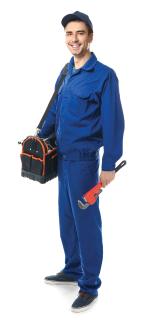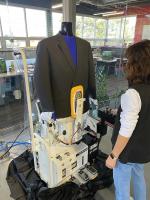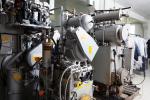CHICAGO — Tensioning machines have earned their place in many drycleaning plants because they allow employees to produce excellent finishing results while not requiring them to bring a lot of experience to the position.
In Part 1 of this series, we discussed the evolution of this piece of equipment, as well as times these machines shine. In Part 2, we examined the tensioner’s place in the plant and what it takes to train workers to use it to its fullest. Today, we’ll conclude by looking at some common mistakes made when dealing with tensioning machines, how to care and maintain them, and what the future may hold in this corner of the plant.
Mistakes Made
However, even though today’s machines are easier to use, Jim Groshans, sales manager for Unipress Corp., urges owners not to skimp on the education part of the process.
“Skills training is key,” he says. “We find that when people buy a piece of equipment, it’s important to constantly follow up and make sure that employees know how to use the equipment properly.”
To get the best results, it’s more than just knowing how to press a garment, Groshans says. It’s that they understand why they’re doing certain things.
“It’s knowing why you’re putting things on a piece of tensioning equipment or not putting it on the tensioning equipment, rather than just going through the motions and saying, ‘OK, I’ve gotta press every piece that comes through.’”
Yuriko Tanabe, vice president of European Finishing Equipment Corp./Hi-Steam, based in Secaucus, New Jersey, has also seen owners make this mistake after purchasing a tensioning machine.
“They don’t give their team instructions, so they don’t know what they are doing,” she says. “All owners and managers should get involved in training so they know how to use it. It’s easy to learn how to use, but some say, ‘Here’s a new machine — good luck to you,’ and walk away. That’s no good.”
“Just because you bought a piece of equipment doesn’t mean it’s going to be used properly,” Groshans says. “It’s like any tool in the toolbox. My dad used to say: ‘A tool is only as good as the person who’s been trained to use it.’”
Care and Maintenance
To get the best out of any machine — tensioning equipment included — it’s important to take care of it by providing regular preventative maintenance and replacing worn parts.
“My first thought when it comes to preventive maintenance is that it’s always going to be the steam,” Groshans says. “The boiler is the heart of the operation, and it’s typically neglected. It’s tucked away in the boiler room, out of sight and out of mind. All that steam goes through nearly every piece of equipment in the plant, and yet, people don’t pay attention to it. So, I always want to look at the quality of the steam and the water that’s in the boiler, because that will affect the quality of steam in all the presses and, ultimately, the quality of the garment.”
The other element Groshans always urges cleaners to examine are the lungs of the plant: the air compressor.
“All too often, the air compressor is put in the boiler room because they are really loud, but that’s the worst place to put it,” he says. “It actually takes more energy to compress hot air — the air compressor itself or the air intake should really be outside. We find that air compressors can be very inconsistent, and they have moisture in them. Anytime you have inconsistent air or moist air going through your system, anything that’s air-operated will be affected.”
Tanabe says that the operator should be a key player in the preventative maintenance schedule.
“They should maintain the covers on the machine and ensure that there is maximum air flow,” she says. “Also, avoid using spray starch on the machine because it can clog up the air flow. Check the lint filter weekly so it doesn’t get clogged up. That’s it. It’s not difficult. You just have to keep an eye on it.”
Tension in the Future?
So, as tensioning machines continue to meet the needs of cleaners who are working to meet their own customers’ demands, what is the future for this type of equipment?
“I look at the evolving technologies and engineering, and it’s always going to focus on labor, fashion, and reducing touches within an operation,” Groshans says. “The ultimate goal with a lot of your new owners, especially when they come from outside the industry, is to have zero employees. We’re in the service business, however, so we’re in the people business, and you’re going to need bodies. But how many more bodies do we need? Because we’re looking at equipment where, if you had three people back there pressing shirts, can you get down to two? If you have two, can you get down to one?”
“The improvements that will be made in the future will be in the operation of the equipment,” concurs Mike Tungesvick, national sales manager for equipment manufacturer Sankosha USA. “To make them more efficient and increase their ease of use. That’s our goal with any of our equipment — make it easy for anybody to use, because the reality of this industry is that we’re running out of skilled operators.”
For Part 1 of this series, click HERE. For Part 2, click HERE.
Have a question or comment? E-mail our editor Dave Davis at [email protected].





















